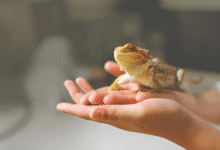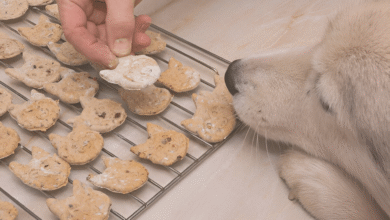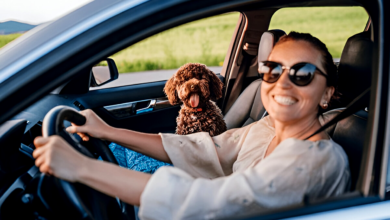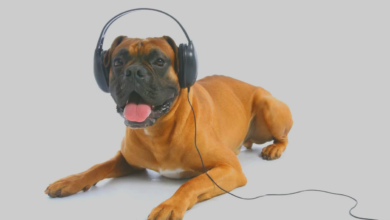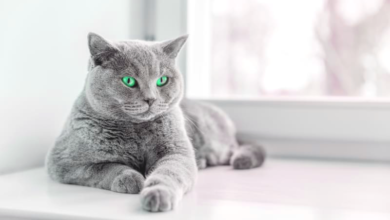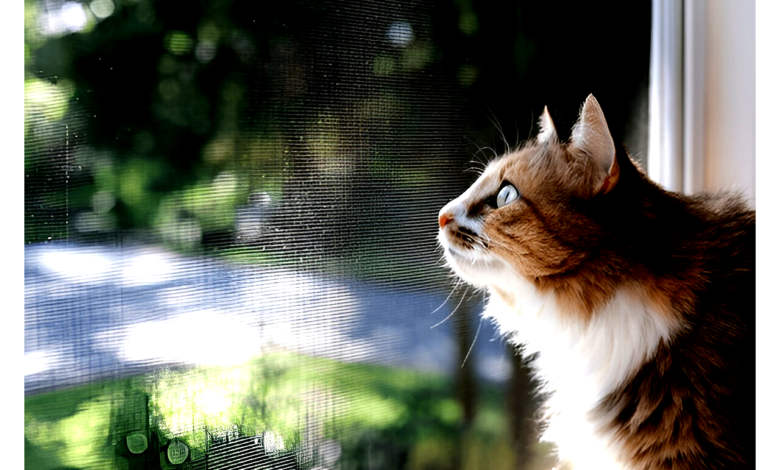
Pet-Proofing Your Home: UK Safety Standards & Tips
Pets bring joy and companionship to our lives, but ensuring their safety at home is a responsibility every pet owner should prioritize.
Pets bring joy and companionship to our lives, but ensuring their safety at home is a responsibility every pet owner should prioritize. Pet-proofing your home according to UK safety standards can help prevent accidents, protect your belongings, and create a comfortable environment for your furry friends. With the right knowledge and preparation, you can make your home a haven where pets can thrive without unnecessary risks. Taking the time to safeguard your home not only prevents costly mishaps but also strengthens the bond between you and your pet, allowing them to explore their surroundings safely and confidently.
Understanding UK safety standards for pet-proofing involves recognizing potential hazards, securing dangerous areas, and making mindful choices about household products and furniture. From preventing poisoning to minimizing injury risks, a well-pet-proofed home ensures peace of mind for both you and your pet. The UK has specific regulations, such as the Animal Welfare Act 2006, that dictate the responsibility of pet owners in creating a safe environment. Beyond legal requirements, practical considerations such as securing loose wires, keeping harmful substances out of reach, and ensuring outdoor spaces are enclosed can significantly impact your pet’s well-being. In this guide, we’ll explore essential steps, practical tips, and the regulations you should be aware of to create a safe and secure home environment for your pets.
Understanding UK Pet Safety Regulations
Legal Requirements for Pet Safety
In the UK, pet owners have a legal responsibility to ensure their animals’ welfare under the Animal Welfare Act 2006. This includes providing a safe living environment, adequate nutrition, and proper care. Failure to comply with these regulations can result in fines or even legal action. The law also mandates that certain toxic substances and hazardous items be stored securely out of pets’ reach. Compliance with these standards ensures not only the safety of your pet but also the protection of your household and property.
For dog owners, UK law requires that dogs be microchipped and wear a collar with an identification tag in public places. Certain breeds also fall under the Dangerous Dogs Act 1991, which outlines ownership restrictions. Understanding these legal aspects ensures that pet-proofing efforts align with national guidelines. Regular home inspections to identify potential hazards, combined with knowledge of UK pet safety laws, form the foundation of responsible pet ownership.
Common Household Hazards for Pets
Toxic Foods and Plants
Many foods that are safe for humans can be harmful or even fatal to pets. Chocolate, grapes, onions, garlic, alcohol, and caffeine are just a few examples of toxic substances that should be kept far from pet access. Additionally, household plants like lilies, poinsettias, and sago palms can be poisonous if ingested by cats or dogs.
Being proactive by researching and removing hazardous plants from your home and garden is crucial. Safe alternatives, such as pet-friendly plants like spider plants or Boston ferns, can provide greenery without the risk. When it comes to food, ensuring pets do not have access to human meals by training them not to beg and using secure storage containers can prevent accidental ingestion.
Electrical Cords and Small Objects
Curious pets, particularly puppies and kittens, may chew on electrical cords, posing electrocution risks. To prevent this, secure cords using protective coverings or hide them behind furniture. Small objects like coins, batteries, or children’s toys can be choking hazards and should be kept in secure storage.
Training pets from an early age to avoid wires and small items, combined with using pet-safe deterrent sprays, can minimize risks. Ensuring that play areas are free from tiny, swallowable objects reduces the chance of choking incidents. Providing engaging toys and chew-friendly items can also redirect their attention from hazardous materials.
Household Chemicals and Medications
Cleaning products, antifreeze, pesticides, and human medications should always be stored in locked cabinets or high shelves. Even seemingly harmless substances, such as xylitol (found in sugar-free gum), can be extremely dangerous to pets.
A practical approach is to use pet-safe cleaning products and non-toxic alternatives wherever possible. Labeling hazardous materials clearly and educating household members on the importance of pet safety ensures everyone contributes to maintaining a pet-proof environment.
Room-by-Room Pet-Proofing Guide
Living Room
The living room is a common space where pets spend a lot of time, making it essential to secure potential dangers. Ensure all electrical wires and outlets are covered or hidden behind furniture to prevent chewing accidents. Heavy decor, such as bookshelves or lamps, should be secured to prevent tipping over. Avoid placing fragile or breakable items within reach, as playful pets may knock them over.
Investing in pet-friendly furniture materials can also make cleaning easier and reduce damage from clawing or chewing. Designating a cozy pet area with a soft bed, toys, and scratch-friendly surfaces can help pets feel at home while keeping them away from delicate furniture.
Kitchen
The kitchen holds many potential hazards, from toxic foods to sharp utensils. Keep food, especially toxic items, out of reach by using secure cabinets or placing them on high shelves. Secure trash bins with lids to prevent pets from rummaging. Store cleaning supplies in locked cabinets to avoid accidental ingestion.
A helpful strategy is to train pets to avoid certain areas of the kitchen using positive reinforcement. For example, placing pet deterrents near restricted zones or offering treats in designated safe spaces can reinforce boundaries.
Bedroom
Bedrooms should be clutter-free to avoid small objects becoming choking hazards. Remove items such as jewelry, coins, or paper clips that pets may swallow. Store medications in drawers or cabinets, as pills and capsules can be toxic to animals. Keep laundry baskets covered to prevent pets from chewing or swallowing clothing items like socks.
Consider creating a pet-safe zone within the bedroom by setting up a cozy bed and using baby gates if needed to keep curious pets away from potential dangers. Encouraging designated sleeping areas helps prevent pets from jumping onto furniture or accessing hazardous materials.
Bathroom
Bathrooms contain many items that can be dangerous for pets. Keep toilet lids closed to prevent drinking from the bowl, as cleaning chemicals can be harmful. Store toiletries, cosmetics, and cleaning supplies away from reach. Avoid leaving bathwater unattended, as smaller pets may fall in and struggle to get out.
A proactive approach is to designate pet-free zones within the bathroom, using baby gates or closed doors. Providing an alternative water source, such as a pet water fountain, ensures pets are hydrated without seeking out risky sources.
Outdoor Pet Safety
Fencing and Garden Safety
A secure garden is crucial for outdoor pet safety. Ensure fences are high enough to prevent jumping and free from gaps that pets could squeeze through. Additionally, be cautious of toxic plants like foxgloves and daffodils in gardens.
Using pet-friendly fencing materials and adding boundary reinforcements prevents escape attempts. Creating a shaded area with fresh water access keeps outdoor playtime safe and comfortable, particularly during warm weather.
Safe Outdoor Play Areas
Creating a designated area where pets can play safely is essential. Use pet-friendly grass alternatives, such as artificial turf, to prevent digging and avoid using harmful pesticides or fertilizers. Providing a mix of play structures, shade, and hydration stations keeps outdoor environments engaging yet safe.
Read More: Essential Nutrients for Puppies: A Complete Guide (2023)
Conclusion
Pet-proofing your home in accordance with UK safety standards is an essential part of responsible pet ownership. By taking proactive steps to remove hazards, secure dangerous areas, and educate yourself on potential risks, you can create a safe environment where your pet can live happily and healthily. Regularly reassessing your home’s safety measures ensures that as your pet grows and their behavior changes, they remain protected. Investing in pet-proofing today means peace of mind and a healthier, happier life for your furry companions.
FAQs
1. What are the most common household hazards for pets?
Common hazards include toxic foods, electrical cords, small objects, household chemicals, and unsecured furniture that can tip over.
2. How can I pet-proof my kitchen?
Keep food, especially toxic items, out of reach, secure trash bins, and store cleaning supplies in locked cabinets.
3. Are certain houseplants dangerous for pets?
Yes, plants like lilies, poinsettias, and sago palms are toxic to pets and should be kept out of their reach.
4. How do I prevent my pet from chewing on electrical cords?
Use protective coverings, secure cords behind furniture, and provide chew toys as a safer alternative.
5. What are UK laws regarding pet safety at home?
The Animal Welfare Act 2006 requires pet owners to provide a safe environment, and certain toxic substances must be securely stored. Dogs must also be microchipped and wear an identification tag in public.

